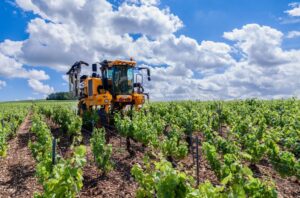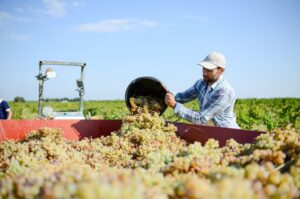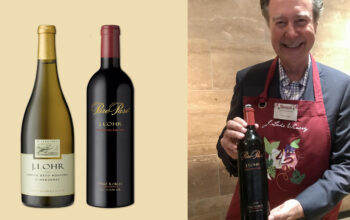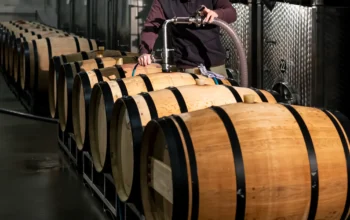Highest harvest time
With autumn approaching, the wine harvest is also just around the corner. Three months of hectic, nail-biting and hard work, but also lots of ice-cold beer and ending with a banging party.
When this edition hits the mat, many winemakers are at absolute peak pressure. At least: at winemakers who live and work in the northern hemisphere of our planet. For here, harvesting traditionally takes place from early September to November. All the blood, sweat and tears put into the vineyard last year can - no, should - be cashed in at this time.
Concentration
As I wrote in WINELIFE 64, spring may look innocuous, but this is pre-eminently the time when the elements can make life difficult for the winemaker. The weather can turn dramatically, resulting in potential horror scenarios. During the summer months, the stress level for the winemaker decreases somewhat. Fortunately, because in autumn, cortisol and adrenaline levels soon shoot back towards the stratosphere. Extreme concentration is now required, as a simple misstep can have disastrous consequences for the quality of the wine.
Silence before the storm
Better, then, that the winemaker's holiday period falls just before harvest. As luck would have it, the man or woman in question is well rested so that once back at the winery, he or she can start working full of fresh energy. Initially, there is still a kind of calm before the storm. All the necessary preparations are made so that when the time comes, the grapes are harvested at their optimum ripeness. Harvesting machines are prepared, picking teams are assembled, grape presses are cleaned and pumps are checked. So all hands on deck, and at larger wineries this quickly looks like a military operation.

The perfect harvest moment
The winemaker himself can now be found daily in the vineyards. Nervously, he scours the various plots. He knows from experience how grapes ripen and that some are ready to be harvested earlier than others. Also, some vineyards or parts of them planted with the same grape may be ripe earlier than other pieces. If part of a vineyard is nicely sheltered from the wind and catches more sun, the grapes here are more developed than elsewhere in the same vineyard. A winemaker knows this and keeps an eye on it. Walking among the vines, he will pick grapes left and right and assess them. He breaks open the grape, studies the colour of the stone, chews the skin and sends grapes to the lab.
Everything revolves around determining the perfect harvest moment. Whereas in the past winemakers used to steer mainly on sugar content and acidity of the grape to pinpoint this moment, today they include more things. For instance, so-called phenolic ripeness is now also an important consideration. In plain Dutch: the winemaker wants the tannins to be ripe too. This does not make life easier, as the sugar content can already be quite high while the tannins are not optimally ripe. So tough, but important choices, which directly influence the final wine.

TEXT HUIB EDIXHOVEN
Read the whole article in WINELIFE 67. You can order here.
Don't want to miss a single edition? Subscribe then subscribe to Winelife Magazine now!




